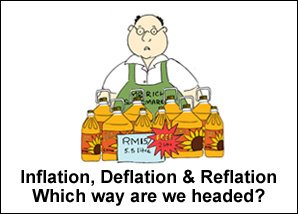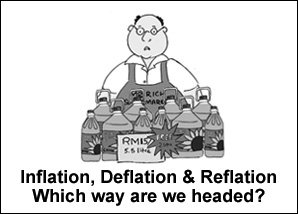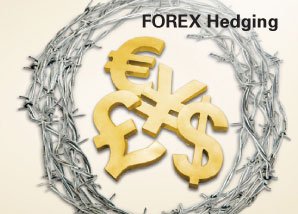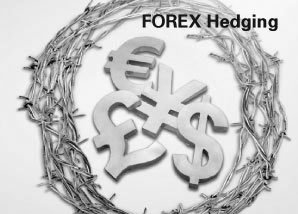Volatility Ahead
Will these 6 biases affect your investments in 2015?
If you thought the market ups and downs went away with 2014, brace yourself, 2015 is forecasted to be another choppy year. In fact, investment analysts from HSBC Global Asset Management believe that in 2015 investors may feel less secure than in the past few years.
According to the HSBC Global Asset Management’s Investment Outlook report, “The main factors for this expected shift in sentiment is that the cycle is maturing in the U.S. and as a result monetary policy will be less supportive. Markets will likely be confronted with more risk coming from contradictory forces; economic expansion on one side and tighter monetary conditions on the other.”1
It seems probable that the U.S. Federal Reserve may soon make its first interest rate hike in about 9 years as the U.S turns in better than expected jobs data.2 This could lead to a rise in volatility as liquidity is withdrawn in the largest global economy, resulting in equity markets around the world losing some support,” the report adds.1
Besides the U.S., the recent surprise increase in the pace of quantitative easing by the Bank of Japan to stimulate the economy and the slowing down of China’s economy is also of concern. Growth challenges in these markets mean interest rates might remain low in developed markets such as the U.S. and UK.1
Given the various factors influencing the global economy, 2015 may well be a volatile year, in terms of investment. Volatility may cause an investor to run the gamut of emotions – from overconfidence to fear to greed and regret, which may hinder them from making rational investment decisions. Investors influenced by emotions have the potential to make these 3 common investment mistakes.
Three common investment mistakes3
 Trying to time the market
Trying to time the market
Driven by the desire to gain the highest returns, many investors hope to buy at the lowest and sell at the highest. However, trying to time the market is not as easy as it seems. Correctly picking the highs and lows in markets is difficult and investors are likely to miss the best days of performance, which may mean leaving money on the table.
 Letting emotions hinder investment decisions
Letting emotions hinder investment decisions
Investors often look to other investors to seek reassurance (herding behaviour) on the outlook for the economy. This can be a costly decision as the market commentary is usually positive when the market tops and despondent when the market tanks. Markets move based on what investors believe will happen in the future. However, when expectations are already very high (euphoria), positive outlook will be priced in and it becomes much more difficult for the news to be a positive surprise. This provides much more scope for the markets to go down. When the market reaches the bottom, investors tend to feel despondent / depressed and do not invest. However, historical data shows that it is usually the point of maximum financial opportunity.
 Focusing on short-term trading
Focusing on short-term trading
Investors tend to gain confidence as markets rise, which evaporates as markets decline leading to frequent buying and selling. Frequent trading involves transaction costs, which will affect investment returns. The chart3 on the right shows the equity value of a buy-and-hold strategy is higher than buying and selling five funds over the same period of time.
What are these mistakes not telling you?3
Okay, so what? Many investors may have made these mistakes once a while. While that is true, the interesting point about these investment mistakes is that they may reveal a set of internal investment biases you may or may not have been aware of. If you find yourself a repeat offender of these mistakes, you may want to consider these 6 key internal biases that could affect your judgment.
![]()
Potential Consequences
- To avoid loss, you may sell winners too early. This may limit the upside potential of a portfolio.
- Alternatively, you may hold on to losing investments for too long and not move into a better one, therefore increasing your risk.
- You may hold a losing position that you would otherwise sell because you want to avoid the mental pain associated with the bad decision.
![]()
You believe you have the ability to pick the winners and are in more control of things than you actually are.
Potential Consequences
- You may overestimate your ability to evaluate a company as a potential investment and may be blind to any negative information that might normally indicate a warning sign.
- Your optimism may cause you to underestimate the downside risks and suffer poor portfolio performance.
- Due to your overconfidence in a certain asset, you may tend to hold under-diversified portfolios thereby taking on more risk without a commensurate change in risk tolerance.
![]()
You look at wrong or irrelevant information and place too much emphasis on it, e.g. economic forecasts. To validate your point of view, you seek out information that agree with rather than challenge your beliefs.
Potential Consequences
- You tend to get caught up in herd behavior and you avoid information that counters an earlier decision.
- You may make wrong decisions as a result of overlooking or misinterpreting important information.
![]()
You believe what happened yesterday will happen again tomorrow. You look for investment patterns and chase momentum, which may result in heavy losses.
Potential Consequences
- You may perceive yourself as having superior predictive powers (that cause you to take excessive risk) when in fact you do not.
![]()
When you are offered a choice between RM10 today and RM11 tomorrow, you will choose the immediate option.
Potential Consequences
- You want returns now and as a result, may sell winners too soon.
- You chase after hot investments that carry higher risk but “appear” to offer better short-term return prospects.
![]()
You value other people’s opinions and attempt to emulate their investment behaviour.
Potential Consequences
- You may jump on the “bandwagon” of the next popular investment with lessened regard for the risks, because “everybody” is investing in it.
How do you counter these investment biases?3
Successful investors typically deal with volatility using a disciplined approach, instead of letting their emotions or bias drive them.They choose to stay close to their investment strategy and long-term objectives regardless of how painful it may be to guard against emotions.
One way that you may consider to counter these biases and reduce investment mistakes is to build a diversified portfolio and conduct regular financial reviews to keep up-to-date on the portfolio status.
Use the power of diversification6
Because returns are hard to predict
The winning asset class performance in 2014, may not repeat this year. Simply following last year’s winners or putting all of your “eggs in one asset basket” may be risky. Risks may be reduced if the holdings are properly diversified.
Because correlation among asset classes change
The correlation among asset classes changes over time. So what worked two years ago may not perform as expected in today’s scenario. Besides that, diversification allows you to mix assets with a positive expected return with other non-correlated assets to target a higher level of return for a certain acceptable level of risk.
Because you can cross asset classes too
Diversification benefits are available not just within asset classes, such as equities, but across asset classes as well. They are likely to be greater across different asset classes because asset classes are generally less correlated than individual securities or different geographical markets within an overall asset class.
Because your risk appetite matters
Asset allocation gives investors the opportunity to potentially benefit from changing market cycles, and may help reduce overall portfolio risk by offering a higher degree of diversification.
To help you visualise the asset allocations process, we list a few types of investors with their sample allocations here. Each of these sample portfolios comprises different proportions of each asset classes.
Regular reviews may be required to keep the portfolio up-to- date and make necessary adjustments to the allocation should the market become more volatile.
Diversification does not take risk totally out of the equation. Even with a diversified portfolio of risk assets and perceived safe-haven assets, periods of extreme volatility and significant drawdowns still take place from time to time. Therefore, diversification can help reduce certain types of investment risk but it does not eliminate investment risk altogether.
Investors may consider to take a long-term approach and rebalance the portfolio in order to benefit the most from diversification.
If you need assistance in diversifying your portfolio, please contact HSBC’s relationship manager or walk into any HSBC branch for more information.
Sources: 1 HSBC Global Asset Management, “Investment Outlook: To 2015 and beyond”, December 2014. 2 The Star, “Strong US jobs data raises odds of Fed rate rise”, March 9, 2015. 3 HSBC, Managing volatility and investors biases, January 2013. 4 Schroders, Thomson Datastream, January 16, 2013. 5 Bloomberg, IMF, BusinessWeek, Time, HSBC. 6 HSBC Global Asset Management, Investment Quarterly: The Power of diversification Q3 2014.


 LIKE THIS ARTICLE?
LIKE THIS ARTICLE?





















